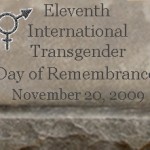Stories about Catholic priests and sexual abuse are so common that for some, “priest” is nearly synonymous with “pedophile.” Because the bulk of *known* Catholic Priest sex abuse cases have involved boys, the association also leads to assumptions about priests’ latent homosexuality. Reflecting and reinforcing these associations about Catholic Priests are the plethora of jokes on late night talk shows:
“I read this in the paper this morning: New York City has a priest shortage. So you see, there is some good news in the world. … To give you an idea how bad it is, earlier today in Brooklyn an alter boy had to grope himself.” —David Letterman
“As you’ve probably heard, the Pope has asked all the Cardinals to return to Rome. You know how they got them all to come back? They told them that there was going to be a performance by the Vienna Boys Choir.” —Jay Leno
“The Cardinals will be staying at the Domus Sanctae Marthae, the new hotel at the Vatican, where turn down service means the bell boy isn’t interested.” —Daily Showhost Jon Stewart
Just when it seems like surely all the scandals have been aired and all the jokes have been told (and for some the bigger scandal may be that the Priests might be “gay”, rather than that they sexually abuse children), we hear about more Priests abusing massive numbers of children and of the Catholic hierarchy systematically attempting to hide the abuse.
In an article published today in the Huffington Post, Rev. Debra Hafner, an Ordained Unitarian Universalist minister, discusses the need for faith communities to directly address sexuality and sexual abuse. Hafner also calls upon Pope Benedict to “move beyond apologies to action,” … urging “all religious institutions to address sexuality in healthier, more open and responsible ways.”
I’m not holding my breath on Pope Benedict suddenly becoming a proponent of sexual health (!). On the other hand I am hopeful about the leadership of the Religious Institute, which is calling for religious leaders to move away from guilt and shame framings of human sexuality toward framings which support holistic sexual health.
————
“Up to the Pope: Stop the Pandemic of Pedophilia“, by Rev. Debra Hafner.
The latest revelations about sexual abuse against children by Roman Catholic priests are nothing short of revolting. The story of Father Lawrence Murphy, who abused more than 200 deaf boys in Milwaukee over decades, despite the boys’ speaking out and calling for help, should outrage us all. The new revelations from Germany and other European countries add to the understanding that the prevalence of pedophile priests are, in the words of my colleague, Dan Maguire, “a global Catholic Church pandemic.”
“It went up to the Pope,” a formerly Roman Catholic friend said to me yesterday, with tears in her eyes. “How is it possible that people knew and didn’t stop it?” Unfortunately, the answer is that the Catholic hierarchy did know, and chose to transfer the priests rather than address the crimes they were committing against children.
Yes, crimes. In the secular world, the offending priests and their superiors would be held criminally accountable for their behavior. It is not enough for the Pope to apologize, as he did to victims last week. It is unconscionable when Catholic apologists try to explain away the church’s inaction as a relic of another time, when people didn’t talk as much about sexual abuse. We are talking now – and learning, to our dismay, how widespread sexual abuse in faith communities really is.
A national research study from Baylor University last year revealed that three percent of adult women, across a range of Christian and Jewish traditions, were involved in instances of clergy sexual misconduct. Most of this occurs between adults; sexual abuse of children and youth by Roman Catholic clergy is of a different magnitude altogether. Still, we must not deceive ourselves that other houses of worship are safe havens from abuse and harassment – or that clergy are prepared to address sexuality issues in a healthy and responsible way. Indeed, many religious leaders are complicit in the silence that has shrouded sexuality concerns in congregations for decades.
Last month, the Religious Institute published a report – Sexuality and Religion 2020: Goals for the Next Decade – that envisions a future when all faith communities will be “sexually healthy, just and prophetic.” In practical terms, this would require:
- Sermons and sexuality education that will break the silence around sexuality and help to mitigate the stigma and shame that too often attend sexuality issues among people of faith.
- New requirements that seminarians (or those studying to be clergy) examine and reflect on their sexual histories, understand the dynamics of sexual attraction, commit to clear boundaries regarding intimate connections with those they serve, and complete training in pastoral care for sexuality-related issues.
- Established polices for safe congregations, including screening of staff and volunteers, background checks for those who work with children and youth, annual trainings on sexual and physical abuse, prevention education for parents and youth, referral agreements with local assault programs, and clearly stated grievance procedures. Every congregation should have a clear, well-publicized policy that sexual contact by clergy, pastoral care providers, religious educators and youth leaders with any congregant, of any age, is not only inappropriate but also actionable.
The Pope now has an urgent responsibility — and an extraordinary opportunity. He must not only move beyond apologies to action, but could also use his influence to urge all religious institutions to address sexuality in healthier, more open and responsible ways.
Pope Benedict, the world is watching and waiting.
—————————–
Related links:
- “Top Ten Sexual Stories of 2009” (Sexuality & Society. See #6, Catholic priest cover up stories)
- “For Years, Deaf Boys Tried to tell of Priest’s Abuse.” By Laurie Goodstein and David Callender. New York Times, March 26, 2010.
- “Catholic Sex Abuse Cases.” Wikipedia.
- “The Church and Sexual Abuse.” American Catholic.org
- “Holy Week 2010: A Test for Catholics.” By Joe Peyronnin, Huffington Post, March 28, 2010.





 Similar structural and cultural analyses incorporating masculinity and institutional/political power could and should also be applied to the other stars of this story, including:
Similar structural and cultural analyses incorporating masculinity and institutional/political power could and should also be applied to the other stars of this story, including: 










 The Transgender Day of Remembrance was initially a response to the murder of Rita Hester, which occurred 11 yrs ago this week (Nov. 28, 1998). Rita’s murder occurred just 5 weeks after the murder of
The Transgender Day of Remembrance was initially a response to the murder of Rita Hester, which occurred 11 yrs ago this week (Nov. 28, 1998). Rita’s murder occurred just 5 weeks after the murder of  Please see below for a marvelous article on the meaning of today’s events from Jos, a trans identified author writing for
Please see below for a marvelous article on the meaning of today’s events from Jos, a trans identified author writing for  This NYT piece focused on the number of U.S. high schools who have created dress codes that explicitly classify “unconventional gender expression” as violations warranting disciplinary actions. Hoffman also mentioned some high schools whose dress codes are more accepting of “gender-blurring clothing.” Hoffman’s recent NYT article includes arguments for and against dress codes that allow for a diverse range of gender and sexuality expressions, noting safety as “a critical concern.”
This NYT piece focused on the number of U.S. high schools who have created dress codes that explicitly classify “unconventional gender expression” as violations warranting disciplinary actions. Hoffman also mentioned some high schools whose dress codes are more accepting of “gender-blurring clothing.” Hoffman’s recent NYT article includes arguments for and against dress codes that allow for a diverse range of gender and sexuality expressions, noting safety as “a critical concern.”